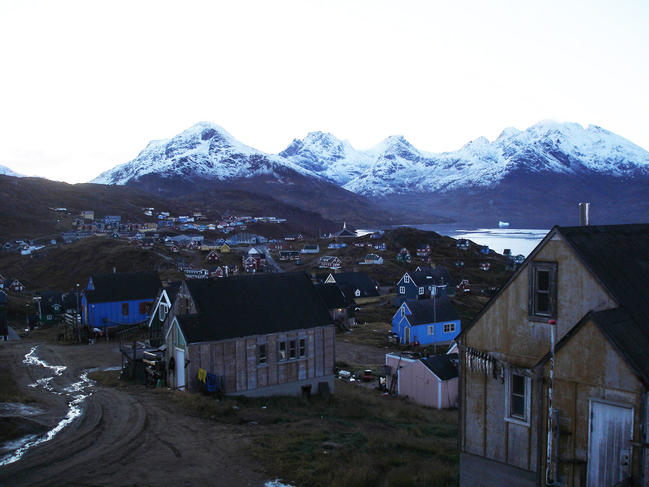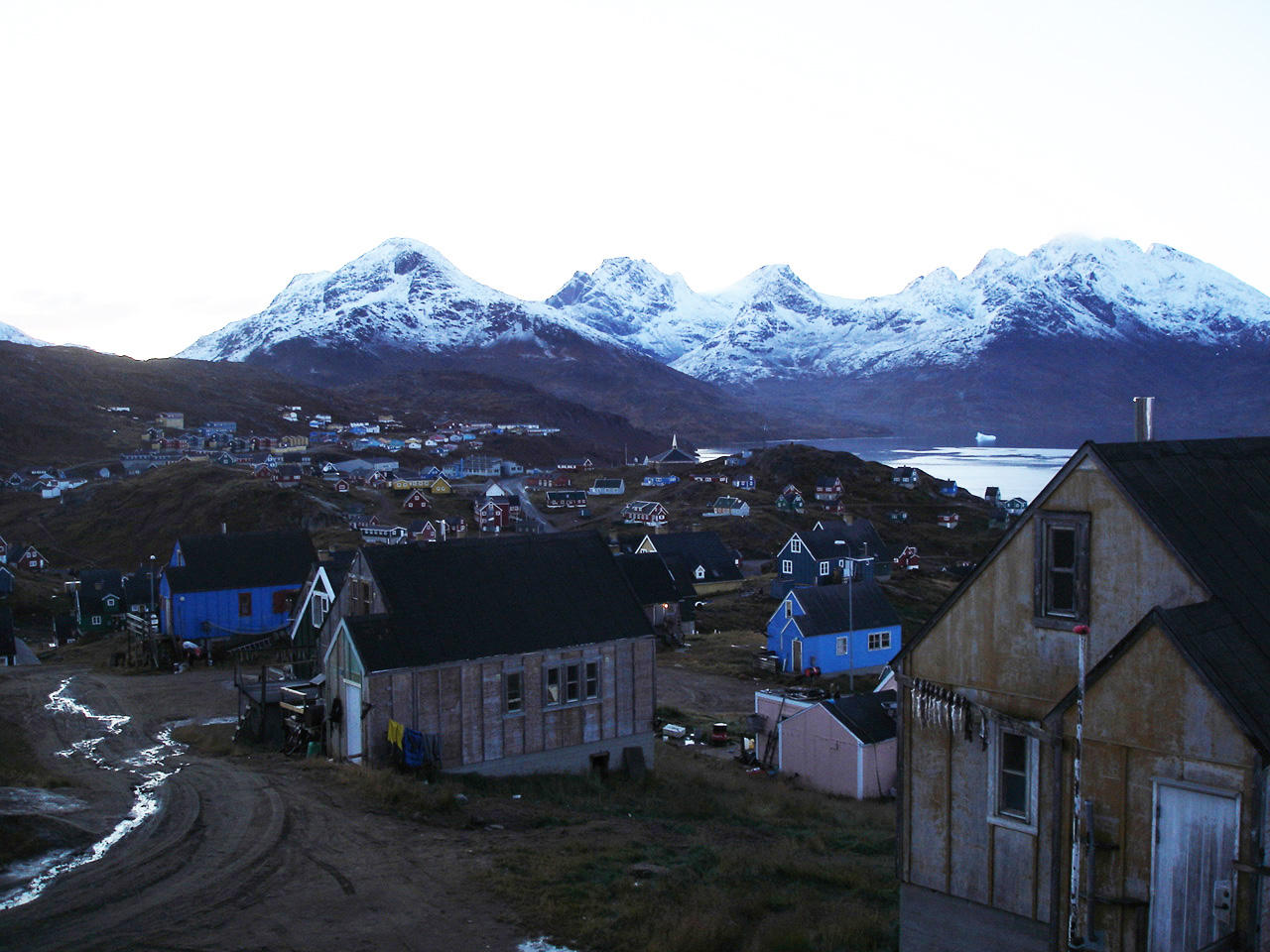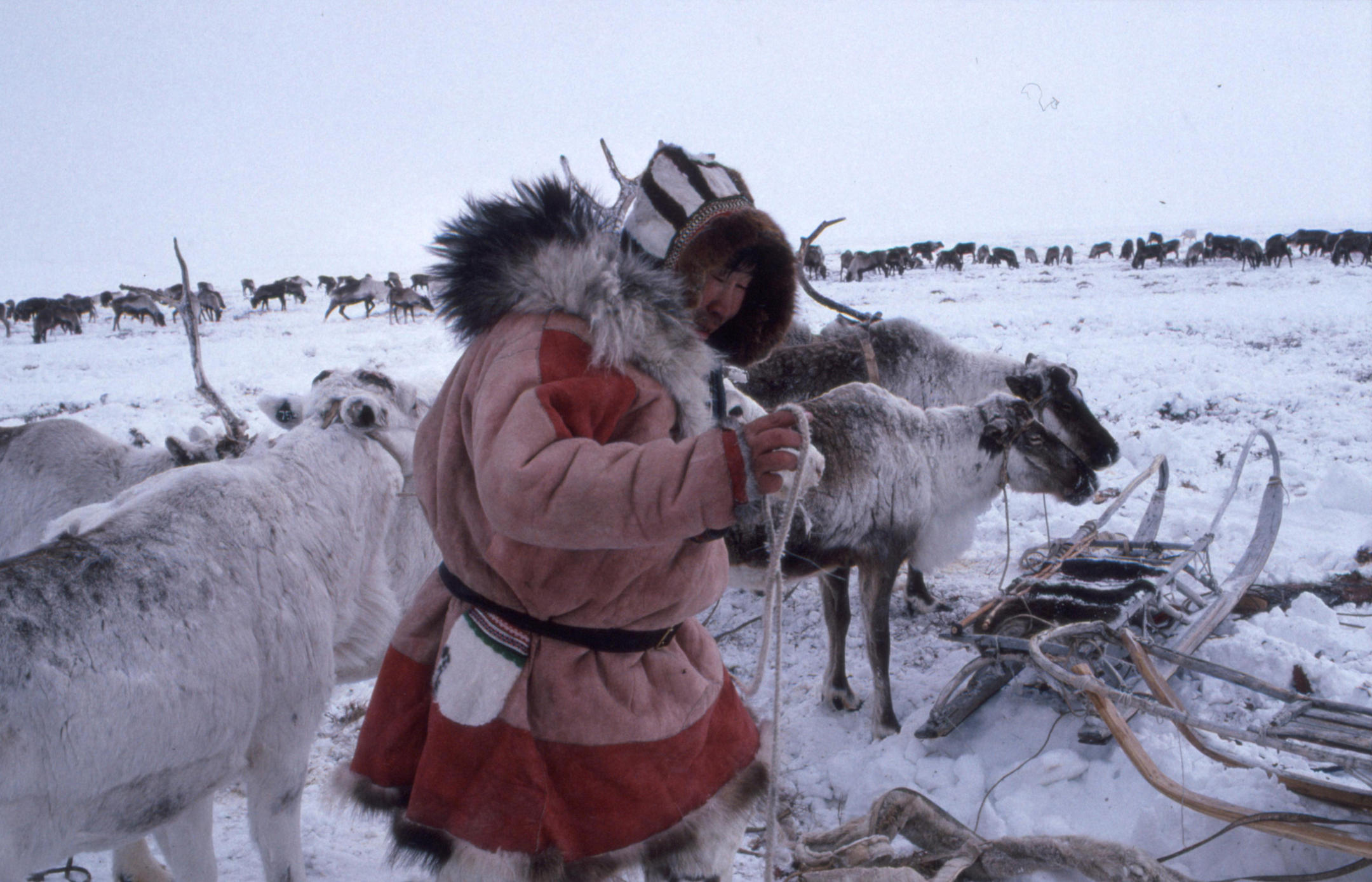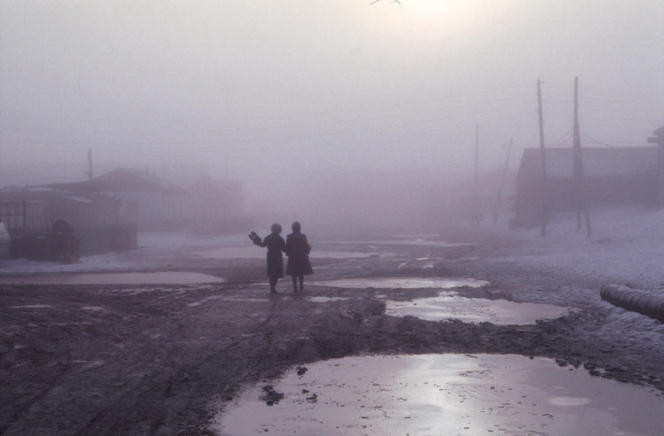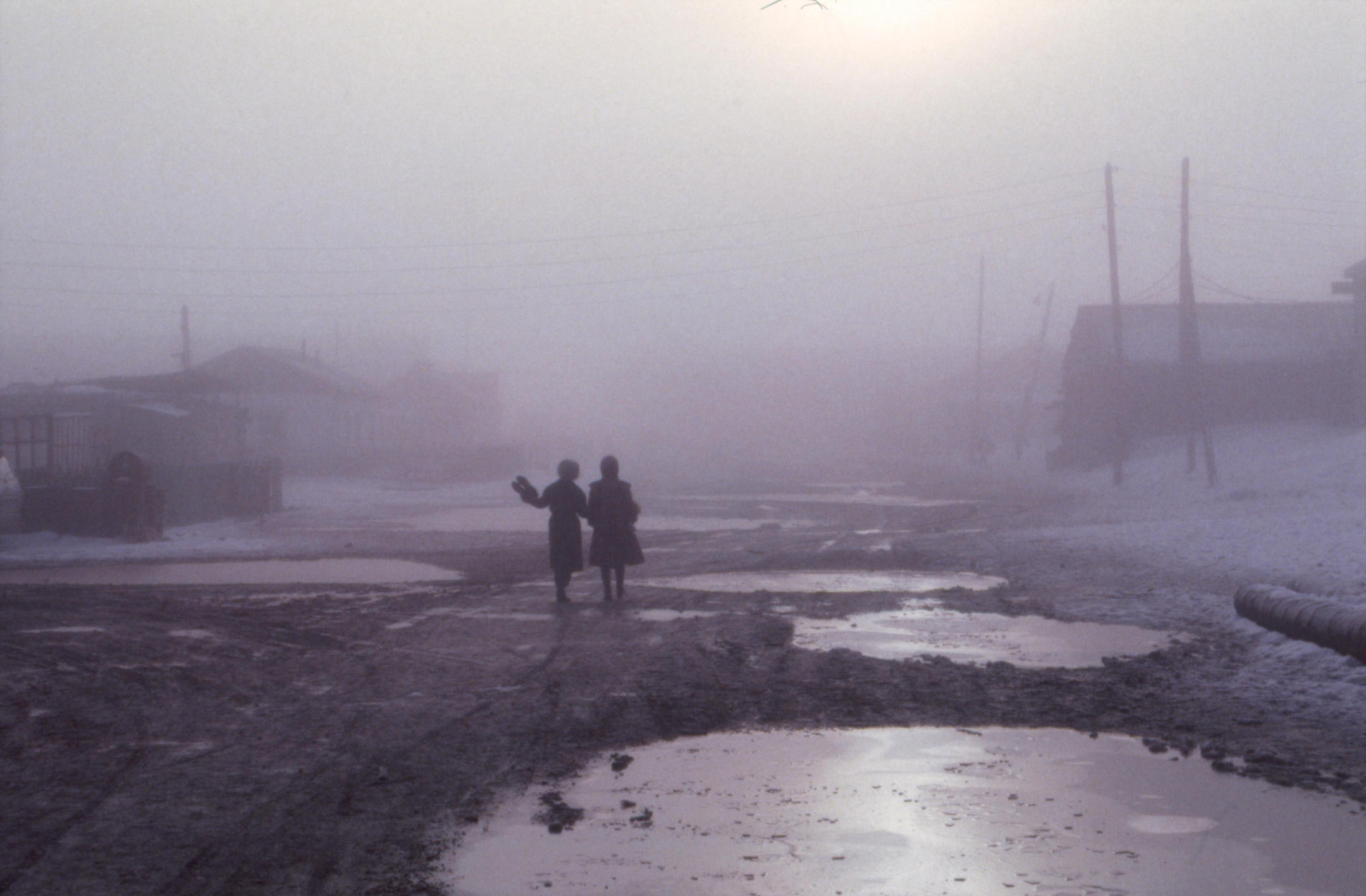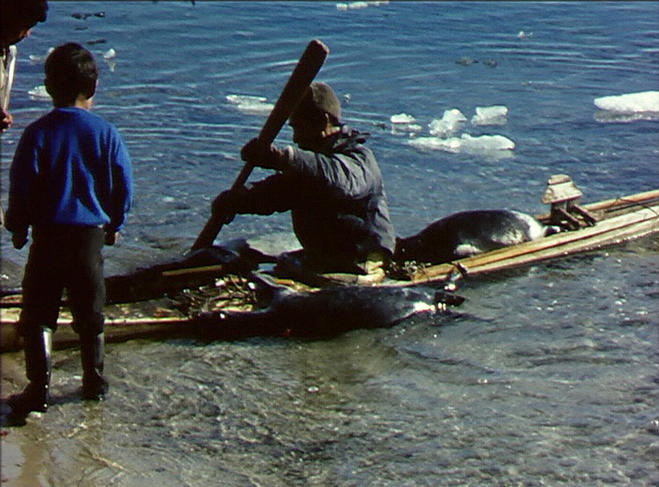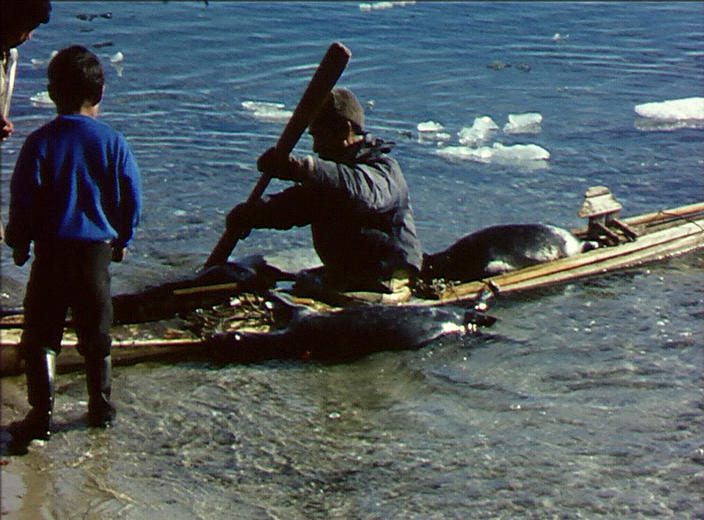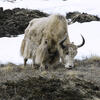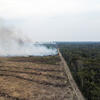You are here
Arctic Peoples Faced with New Challenges
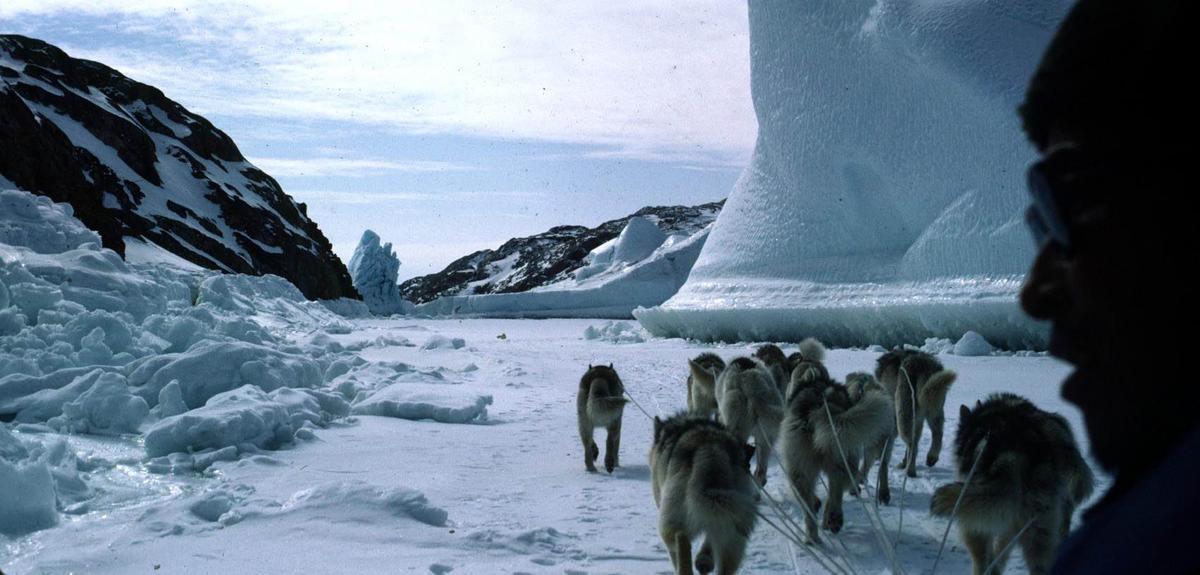
"The office I use now is a bit basic as I have left the best ones to my younger colleagues. After all, I'm retired!" Photographs of Greenland Inuits, Siberian reindeer herders and vast icy landscapes cover the walls of the diminutive workspace occupied by Joëlle Robert-Lamblin, honorary senior researcher and associate member of the CNRS "Dynamics of Human Evolution" research unit. "That's a picture of the Bering Strait seen from the Siberian side that I took from a helicopter," she says proudly, pointing at a photo of the legendary channel shrouded in mist. "I've always been attracted by remote places such as this." Especially if they're in the far North.
Since 1966, this anthropologist has focused her research on the adaptation of small human populations in the Arctic to their specific environment. To do this, she carried out around twenty field trips from 1967 to 2007. A dozen of these involved Inuits in Greenland, mainly on the East coast, in Ammassalik and Scoresbysund (now called Ittoqqortoormiit). Robert-Lamblin has also lived among the Aleuts in the Aleutian Islands, an island chain belonging to the US, and with the Even people in Kamchatka, a peninsula in the Russian Far East. She dedicated five field trips to the Yakut, Yukaghir, Even, Yupik Eskimo and Chukchi peoples in the Siberian Far North.
She always pursued the same goal: to understand the demographic, social, economic and cultural changes brought about by westernization and an increasingly sedentary lifestyle throughout the twentieth century. Today, these same peoples face another major upheaval, that of climate change.
During your many field trips, you have witnessed a trend: little by little, all the native peoples of Greenland, Alaska and the Siberian Far North have become increasingly westernized.
Joëlle Robert-Lamblin: Traditionally, these peoples have been nomads. They have adapted to an extremely harsh environment (in northern Siberia, temperatures can fall as low as -70 °C) by making use of natural resources: they are mainly reindeer herders in Siberia, while the Inuits are specialized in hunting marine mammals. Until the twentieth century, many of these groups made up what are known as "isolates:" they were economically self-sufficient, totally cut off from the outside world, and could rely only on themselves and on their natural resources, such as seals, whose flesh and fat, as well as skin, skeleton, etc., could ensure the survival of scattered families.1 A captured whale could provide for an entire community for a year. Some of these isolates survived until the late nineteenth century: it was only in 1884 that the Dane Gustav Holm managed to cross the sea ice and encounter the Inuits of eastern Greenland for the first time. The way of life of small populations in the Arctic was drastically altered by the progressive arrival of Westerners in the twentieth century, especially during and after the Second World War. In fact, I witnessed this first-hand, since my first field trips took place in the 1960s, when these populations were undergoing this transformation. I saw them settle down. I saw small isolated communities turn into villages, and villages become small towns. These towns quickly acted as magnets, attracting young people and women in particular. In addition, the Arctic regions, which had remained secluded, started to open up with the development of air travel.
What social upheavals has this shift to a more sedentary lifestyle caused?
J.R.-L.: During my trips, I scrupulously noted down changes in certain traditions. For instance, in eastern Greenland, motor boats gradually replaced kayaks, while snowmobiles partly supplanted sleds. These obvious signs of westernization were accompanied by far-reaching changes: because they now gathered together in large villages or towns, indigenous people could not all hunt in one area. An increasing number of them therefore took up salaried jobs, initially in the public services set up by the government of Greenland (which was granted home rule from Denmark in 1979), and later in services and the building industry.
Do they now live in Western fashion, in individual homes?
J.R.-L.: Yes, the model of a large house that is home to several families and generations has now been replaced by the single-family home. I was able to observe this tendency, especially during my field trips in the Ittoqqortoormiit region, in the vast Scoresbysund fjord on the northeast coast of Greenland. In 1968, a community of 410 people, most of whom originated from Ammassalik, lived there after they had accepted a proposal by the Danish authorities in 1925 to re-settle further north. By extending the area inhabited by indigenous populations, Denmark kept control of the hunting grounds in the region and out of the hands of the Norwegians. In Ittoqqortoormiit, people were housed in Western-style individual homes. Since this group included a number of families from the west coast (which had been subject to westernization much longer than the east coast), their way of life, as well as their language, had evolved. Having learnt the latter in Ammassalik, I was sometimes told that I "spoke like their grandmother." All these field trips provided me with the material I needed for my Master's thesis in 1970,2 as well as for subsequent publications and my doctoral thesis in 1983.3
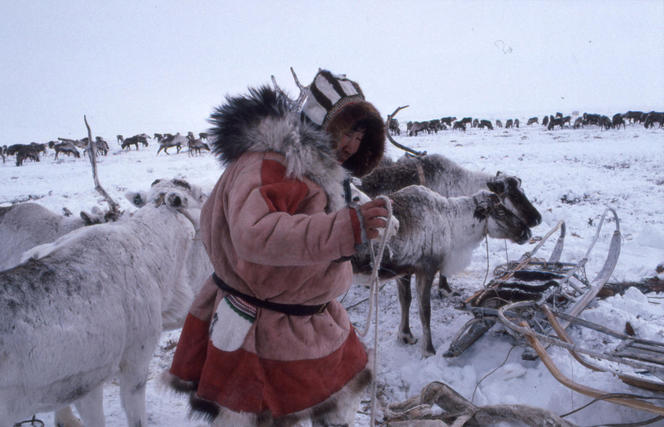
Have the Arctic peoples now adapted to urbanization?
J.R.-L.: Not all of them, far from it. In the towns, not only do they have to share their hunting grounds with dozens of families, which reduces this activity, but there isn't enough salaried work for everyone. Some end up jobless and turn to drink, or violence. To continue their traditional activity while living in towns, some hunters use snowmobiles to hunt seals in order to extend their hunting grounds, although this is criticized as it disturbs the game. Some try their luck and leave their region for Denmark, but many are disillusioned and come back. Even though they have adopted some aspects of the Western way of life, these populations remain strongly attached to their own culture, which is very closely linked to their polar environment.
This is an environment whose balance is becoming increasingly precarious. Until now, what impact has climate change had on the Arctic and its populations?
J.R.-L.: Many effects can already be observed. For instance, in Siberia, the occasionally hot summers cause fires to sweep through the tundra where the reindeer graze, forcing herders to move on more often in search of fresh pasture. In addition, high temperatures result in growing numbers of harmful, disease-bearing insects. The herders also complain about increasingly variable weather. Sudden mild spells followed by freezing weather cause the formation of a layer of surface ice that is harder than it used to be, and which reindeers cannot break through in order to graze on the lichen. Moreover, the permafrost is thawing in this region of the far north of Russia. As a result, the ground, which has been frozen for thousands of years, is subsiding in places. It is becoming dangerous to travel by sled or snowmobile, and the foundations of buildings are no longer safe. Local populations are already adapting, in particular by using building materials more firmly anchored in the ground.
In Alaska, increasingly frequent storms have eroded coastlines and river banks, threatening villages. The inhabitants of Shishmaref, for example, where houses are literally falling into the sea, will have to be relocated. But the most remarkable impact of climate change is on sea ice.
Why are the effects of climate change on sea ice so detrimental to Arctic populations?
J.R.-L.: We know that sea ice forms later and later in winter, and melts increasingly early in spring. Yet it is mostly when seals and polar bears are on (or under in the case of seals) the ice, that they can be hunted by the natives. As the ice dwindles, prey becomes increasingly scarce. Those who wish to hunt for food—and many still do—can always turn to fishing cod, salmon, halibut, etc. It is an activity they have already engaged in, encouraged by the Danish. At the beginning of the twentieth century, a warm sea current led to a sudden influx of cod just off the coast. This bonanza drove part of the native population to change their habits and way of life. But some Inuits are reluctant to do so: in their culture, being a fisherman is far less prestigious than being a hunter! Besides, the only "real" food in their eyes is seal meat.
You might be tempted to think that climate change is a "godsend" for people living in a freezing environment. But this isn't the case. All those I brought it up with are attached to their cultural heritage and wish their ecosystem to remain cold, because they know how to manage it. This is also the message carried by the representatives of the Arctic peoples to the climate conferences they take part in.
By causing the ice to melt, is climate change facilitating access to subsurface resources?
J.R.-L.: Certainly. An increasing number of applications are being filed for the exploration and industrial development of oil, gas and various minerals in the region. Although local populations will probably benefit from the economic spin-offs from these deposits, they also run the risk of suffering harmful consequences to their environment. For instance, in Kvanefjeld in southern Greenland, the government is about to authorize an Australian company to extract rare earths (used to manufacture computer components) and uranium. So an open-cast uranium mine located 7 km from the small town of Narsaq may soon be in operation. The radioactive waste will be stored in a nearby lake not far from hunting and fishing areas on the shore, and in the vicinity of farms where sheep are raised.
In the past, have the Arctic peoples ever had to deal with sudden climate change?
J.R.-L.: Of course! And it was their remarkable ability to adapt that allowed these peoples, or at least some of them, to survive until modern times, even though they were very few in number! One example: when the Dane Gustav Holm arrived in Ammassalik in 1884, he found a population of Inuits totally cut off from the rest of the world, made up of a mere 413 individuals! (The region, renamed Tasiilaq, now has around 3000 inhabitants). Among broad climate trends, there was a significant cooling episode in around 200 BC, corresponding to a period when Greenland was uninhabited, as populations had been forced to migrate to milder regions. Some eventually returned, while others vanished forever. We also know that towards 1000 AD, owing to a warmer climate and the opening of the sea ice, the Thule Eskimos (the ancestors of the Inuits), who were whale hunters, used indigenous whaling boats (called umiaks) to migrate over long distances from Alaska to the Canadian Arctic and Greenland.
You have written or co-edited six books and around a hundred articles about the Arctic populations, in particular about their adaptation to westernization. Now that most of them have adopted a sedentary lifestyle, what sort of ethnological and anthropological work remains to be done on these peoples?
J.R.-L.: We need to study their adaptation to climate change, which is only in its early stages. We have to collect as much evidence as we can from the local populations, even about the slightest environmental change (which glaciers have retreated, how the behavior of game is changing, and so on). We must also carry out a long-term analysis of human adaptation processes (changes of habitat, activities, eating and clothing habits, etc.), as well as the demographic, economic and social consequences this entails. There's still plenty of work!
- 1. See: Victor, P.-E. & Robert-Lamblin, J. (1989 et 1993) - La Civilisation du phoque, vol.I: Jeux, gestes et techniques des Eskimo d'Ammassalik. A. Collin - R. Chabaud and vol.II: Légendes, rites et croyances des Eskimo d'Ammassalik. R. Chabaud, Paris, 424p.
- 2. 'Les Ammassilimiut émigrés au Scoresbysund. Etude démographique et socio-économique de leur adaptation;' published in 1971; see http://www.evolhum.cnrs.fr/lamblin
- 3. Ammassalik, East Greenland - end or persistance of an isolate? - Anthropological and demographical study on change. Meddelelser om Grønland, Man and Society, 10, 168p, published in 1986.


